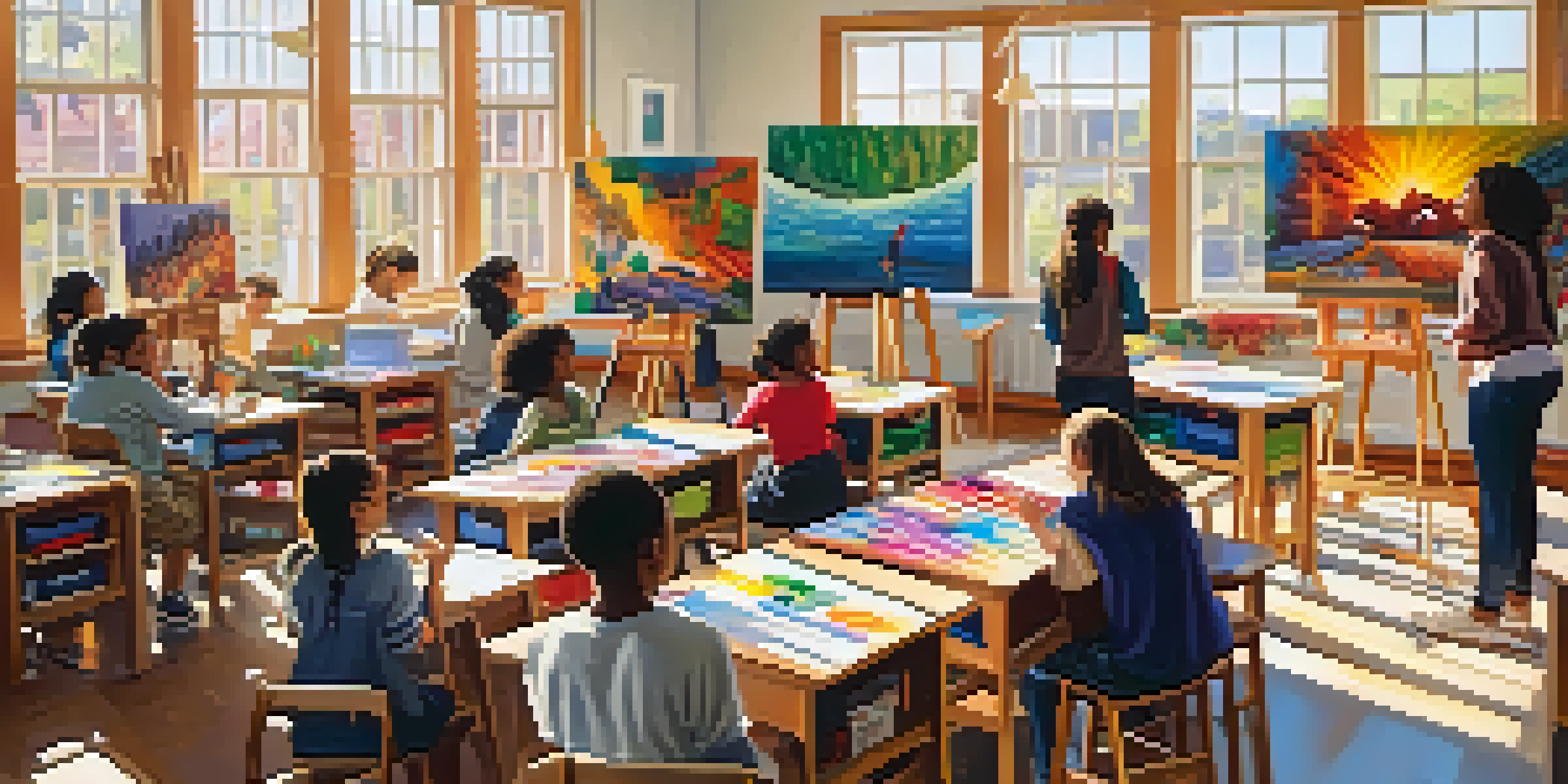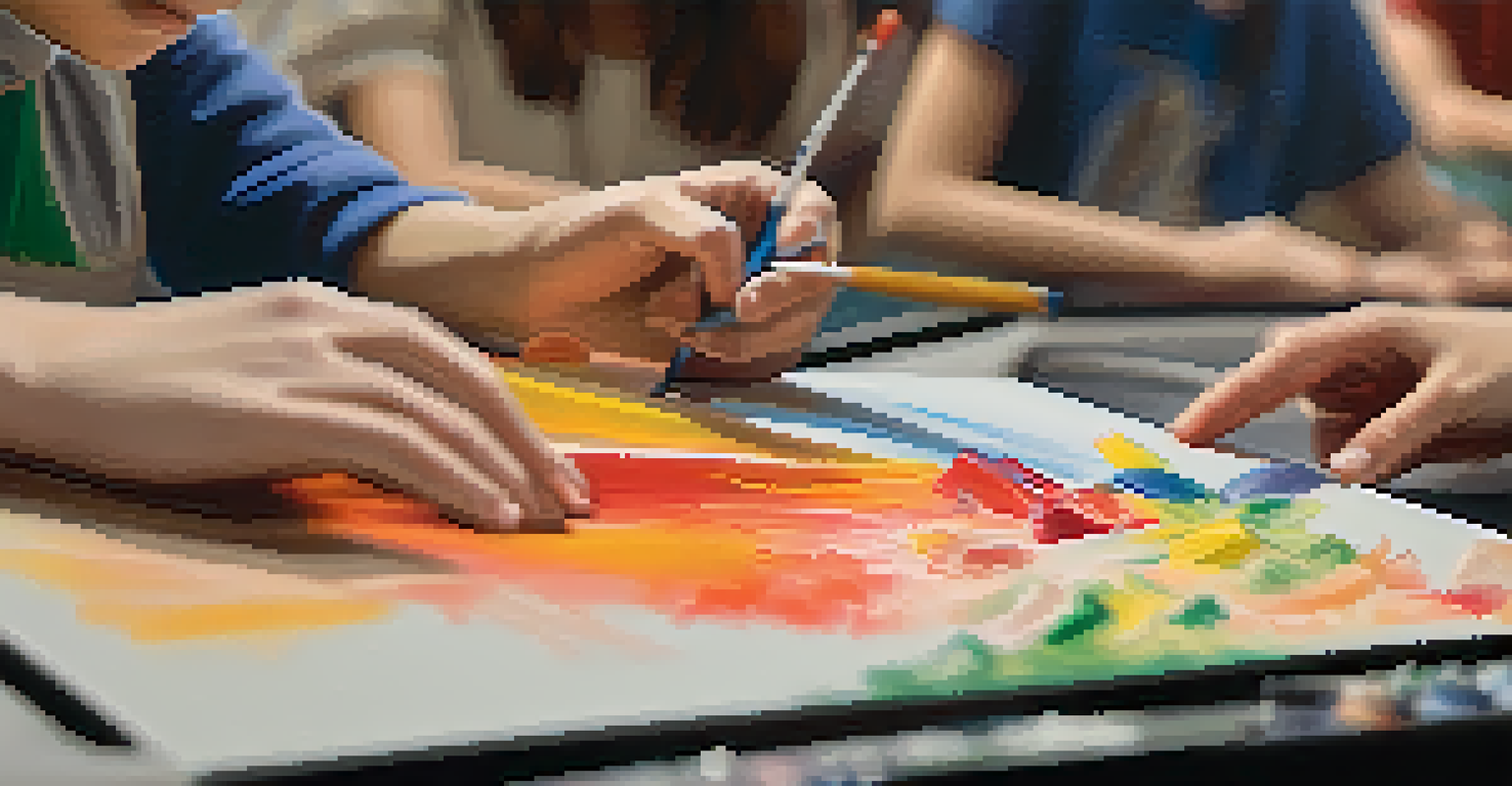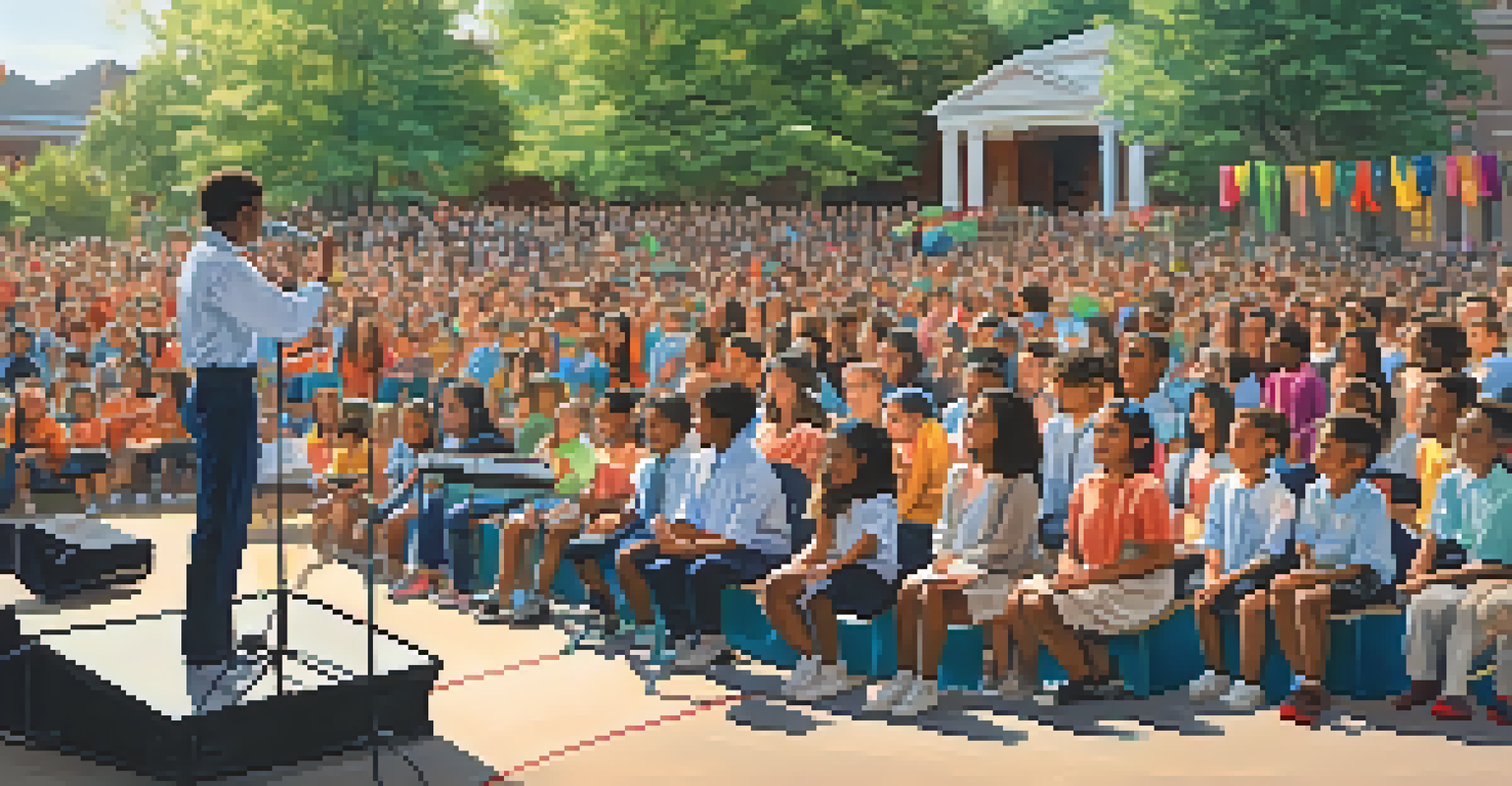The Impact of Arts Programs on Student Engagement in Schools

Understanding Student Engagement in Education
Student engagement refers to the level of interest and participation students show in their learning. It's not just about attendance; it includes emotional, cognitive, and behavioral involvement. When students are engaged, they are more likely to absorb information, participate actively, and develop a love for learning.
Every artist was first an amateur.
Engagement can significantly impact academic performance, leading to better grades and higher retention rates. However, many schools struggle to find effective ways to keep students interested in their education. This is where arts programs come into play, offering an alternative approach that resonates with diverse learning styles.
By incorporating elements like music, theater, and visual arts into the curriculum, schools can create a more dynamic and stimulating environment. These programs often spark curiosity and creativity, making learning more enjoyable and meaningful.
The Role of Arts Programs in Enhancing Engagement
Arts programs serve as a powerful tool for boosting student engagement by allowing creative expression. When students participate in arts-related activities, they often feel more connected to their school and peers. This sense of belonging can increase their overall enthusiasm for attending classes and participating in school events.

Furthermore, arts education encourages collaboration and teamwork, essential skills in any educational setting. For instance, working on a theater production or a group art project fosters cooperation, communication, and problem-solving abilities among students.
Arts Programs Boost Student Engagement
Incorporating arts into education enhances student interest and participation, making learning more enjoyable and meaningful.
These programs also provide a break from traditional academic pressures, allowing students to explore their passions. When students are given the opportunity to express themselves creatively, they often become more invested in their learning experiences.
Boosting Critical Thinking Through Arts Education
Engaging in the arts requires students to think critically and make decisions. Whether they're interpreting a piece of music or analyzing a painting, students learn to evaluate and form opinions. This critical thinking skill is transferable to other subjects, enhancing their overall academic performance.
Art is the most beautiful of all lies; it is the most beautiful of all truths.
For example, a student involved in a debate about the themes in a play may develop stronger analytical skills that benefit their writing or science projects. Arts programs encourage students to approach problems from different angles, fostering innovative thinking.
Moreover, the process of creating art encourages experimentation and resilience. Students learn that failure is a part of growth, which can empower them to tackle challenges in other areas of their education.
The Emotional Benefits of Arts Programs
Participating in arts programs can have profound emotional benefits for students. Engaging in creative activities helps students express their feelings in a healthy way, which can be particularly beneficial during challenging times. This emotional outlet can lead to reduced stress and anxiety levels among students.
Moreover, arts education often promotes self-confidence and self-esteem. When students showcase their talents in front of peers or during performances, they experience a sense of accomplishment that can elevate their self-worth.
Arts Education Enhances Critical Thinking
Engaging in arts fosters critical thinking skills that are transferable to other academic subjects, leading to improved performance.
As students gain confidence in their abilities, they are more likely to take risks in other aspects of their education, leading to greater engagement and willingness to participate in class discussions or activities.
Incorporating Diverse Perspectives Through Arts Education
Arts programs often highlight diverse cultures and perspectives, fostering inclusivity within the school environment. Through exposure to various artistic traditions, students learn to appreciate and respect differences among their peers. This cultural awareness can enhance social interactions and reduce instances of bullying.
For example, a music class that explores global rhythms can introduce students to the rich tapestry of cultural expressions worldwide. Such experiences broaden students' horizons and promote empathy, essential traits in today's interconnected world.
Additionally, fostering an inclusive atmosphere encourages students to share their own backgrounds and stories, enriching the collective experience. This sense of community can significantly boost students' engagement and connection to their school.
Improving Academic Performance Through Arts Integration
Research shows a strong correlation between participation in arts programs and improved academic performance. Students involved in arts education often exhibit higher test scores and better attendance rates. This trend suggests that the skills gained through creative activities may enhance students' overall learning experiences.
For instance, a study found that students who participated in music education performed better in math and reading assessments compared to their peers with no exposure to arts. The discipline, focus, and teamwork required in arts education can translate into improved performance across various subjects.
Creativity Supports Emotional Well-Being
Participating in arts activities provides students with healthy emotional outlets, reducing stress and boosting self-confidence.
As schools seek to enhance student outcomes, integrating arts programs into the curriculum can be a strategic approach. By recognizing the value of creativity in education, educators can foster a more well-rounded and effective learning environment.
The Future of Arts Programs in Schools
As education continues to evolve, the importance of arts programs remains clear. Schools are increasingly recognizing the role that creativity plays in engaging students and enhancing their learning experiences. However, funding and support for these programs can fluctuate, leaving their future uncertain.
Advocacy for arts education is crucial to ensure that these programs remain a staple in schools. By highlighting the positive impact of arts on student engagement, educators and parents can push for policies that prioritize creative education.

Ultimately, investing in arts programs is an investment in students' overall development, preparing them for success in both academic and real-world settings. As we look ahead, it's vital to continue championing the arts in education.